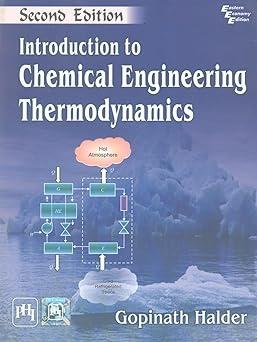A student experimenter decides to convert (2000 mathrm{~cm}^{3}) of laboratory alcohol containing (96 %) ethanol and (4
Question:
A student experimenter decides to convert \(2000 \mathrm{~cm}^{3}\) of laboratory alcohol containing \(96 \%\) ethanol and \(4 \%\) water by mass into vodka having a composition of \(56 \%\) ethanol and \(44 \%\) water by mass.
Data given:
At \(25^{\circ} \mathrm{C}\) and \(1 \mathrm{~atm}\)
In \(96 \%\) ethanol: \(\bar{V}\) (water) \(=0.816 \mathrm{~cm}^{3} / \mathrm{g} \quad \bar{V}\) (ethanol) \(=1.273 \mathrm{~cm}^{3} / \mathrm{g}\)
In \(56 \%\) ethanol: \(\bar{V}\) (water) \(=0.953 \mathrm{~cm}^{3} / \mathrm{g} \quad \bar{V}\) (ethanol) \(=1.243 \mathrm{~cm}^{3} / \mathrm{g}\)
The density of water at \(25^{\circ} \mathrm{C}\) and \(1 \mathrm{~atm}\) is \(0.997 \mathrm{~cm}^{3} / \mathrm{g}\)
(i) How much water should be added to \(2000 \mathrm{~cm}^{3}\) of laboratory alcohol?
(ii) Calculate the volume of vodka after conversion.
Step by Step Answer:






